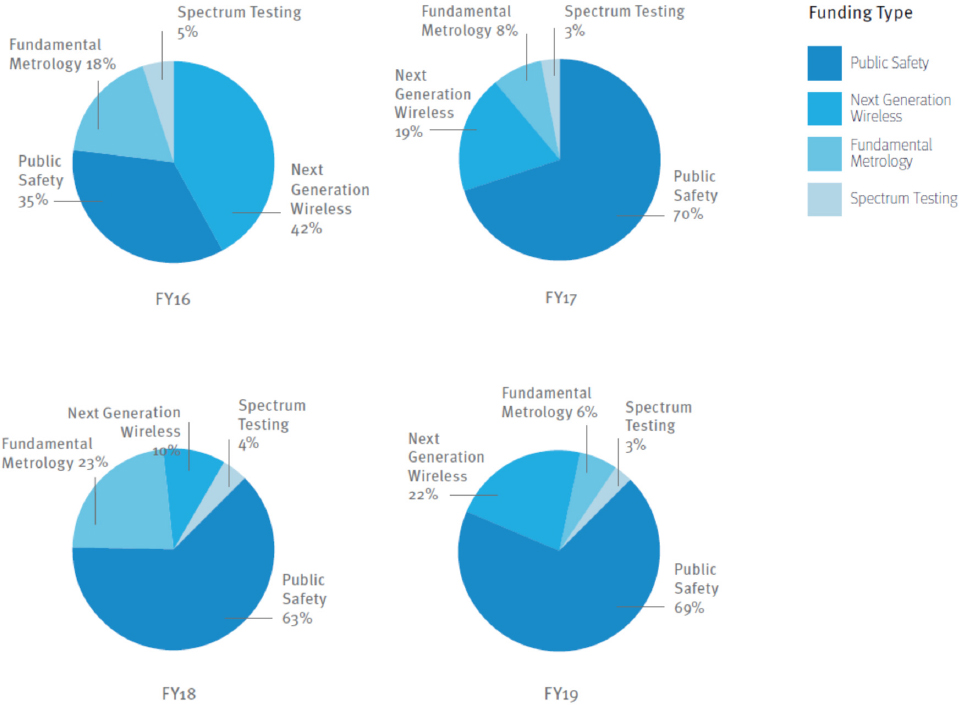2
Overview of CTL
Created in 2014, the CTL of NIST “promotes the development and deployment of advanced communications technologies through the dissemination of high quality measurements, data, and research supporting U.S. innovation, industrial competitiveness, and public safety.”1 There are four organizational units: (1) Public Safety Communications Research Division; (2) Radio Frequency Technology Division; (3) National Advanced Spectrum and Communications Test Network; and (4) Wireless Networks Division. With the exception of the Wireless Network Division, situated in Gaithersburg, Maryland, all the above are located at the Boulder, Colorado, campus of the Department of Commerce (DOC) located at 325 Broadway.
The budget for CTL was $74.4 million in fiscal year (FY) 2019, the majority of which was funded through the Public Safety Trust Fund.2 The next-largest portion is from annual congressional appropriations, followed by other agency funds and fees for calibrations—with these last two being variable year-to-year. The progression with time is shown in Figure 2.1. The percentage allocated to each of the four priority areas is shown in Figure 2.2.
The activities of the CTL consist of research and development, testing, fundamental measurements, calibration services, and convening and outreach activities. As of June 2019, there are slightly fewer than 200 personnel in the CTL. Their allocation to the four organizational units and to headquarters is shown in Figure 2.3. There are in addition 29 term appointments. Four current and one retired CTL staff members are fellows of the Institute of Electrical and Electronics Engineers.
Each of the four CTL priority areas is addressed by the work of one or more of the four organizational units. These relationships are outlined in Table 2.1.
CTL conducts an annual research planning process focused on its three program areas of public safety, trusted spectrum testing, and metrology for advanced communications. Group plans filter up to Divisions for coordination and approval, while the Division and CTL leadership set strategic direction and long-term planning based on NIST priority areas. The present report identifies opportunities in specific program areas where performing strategic planning exercises and road mapping would improve stakeholder engagement. These would have the further benefit of ensuring that CTL programs continue to address stakeholder needs. The annual reviews noted above will allow NIST to monitor progress.
___________________
1 National Institute of Standards and Technology (NIST), Undated, “This is CTL,” U.S. Department of Commerce, Boulder, Colo., p. 1.
2 The Public Safety Trust Fund resulted from spectrum auction.



TABLE 2.1 Communications Technology Laboratory (CTL) Priority Areas Addressed by Each Organizational Unit
| CTL Priority Areas | ||||
|---|---|---|---|---|
| Public Safety Communications | Trusted Spectrum Testing | Next Generation Wireless | Fundamental Metrology for Communications | |
| PSCR | X | |||
| WN | X | X | X | |
| RFT | X | X | X | |
| NASCTN | X | |||
NOTE: PSCR = Public Safety Communication Research Division; WN = Wireless Networks Division; RFT = Radio Frequency Technology Division; NASCTN = National Advanced Spectrum and Communications Test Network.



